
The molars or molar teeth are large, flat teeth at the back of the mouth. They are more developed in mammals. They are used primarily to grind food during chewing. The name molar derives from Latin, molaris dens, meaning "millstone tooth", from mola, millstone and dens, tooth. Molars show a great deal of diversity in size and shape across mammal groups. The third molar of humans is sometimes vestigial.
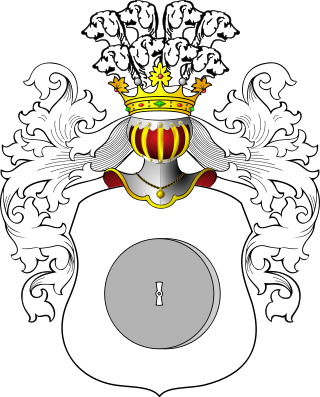
Paprzyca is a Polish coat of arms. It was used by several szlachta families in the times of the Polish–Lithuanian Commonwealth.

The South American coati, also known as the ring-tailed coati, is a coati species and a member of the raccoon family (Procyonidae), found in the tropical and subtropical parts of South America. An adult generally weighs from 2–7.2 kg (4.4–15.9 lb) and is 85–113 cm (33–44 in) long, with half of that being its tail. Its color is highly variable and the rings on the tail may be only somewhat visible, but its most distinguishing characteristic is that it lacks the largely white snout of its northern relative, the white-nosed coati.
Guaporé Biological Reserve (Portuguese: Reserva Biológica do Guaporé is a biological reserve in the state of Rondônia, Brazil, on the border with Bolivia.
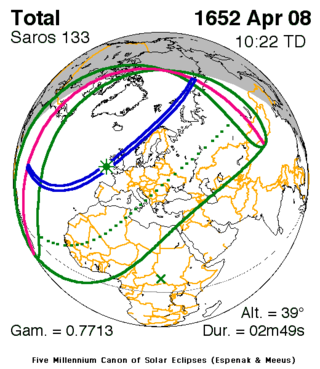
A total solar eclipse occurred on April 8 New Style (NS), 1652, a Monday. In contemporary British sources, the date is alternately listed as March 29, 1652 following the Old Style (OS) as Great Britain had not yet adopted of the Gregorian Calendar by that time. 19th century authors further adjusted the date to March 25 NS, 1652. A solar eclipse occurs when the Moon passes between Earth and the Sun, thereby totally or partly obscuring the image of the Sun for a viewer on Earth. A total solar eclipse occurs when the Moon's apparent diameter is larger than the Sun's, blocking all direct sunlight, turning day into darkness. Totality occurs in a narrow path across Earth's surface, with the partial solar eclipse visible over a surrounding region thousands of kilometres wide. The path of totality intersected the British Isles, as well as passing just off the west coast of Norway.
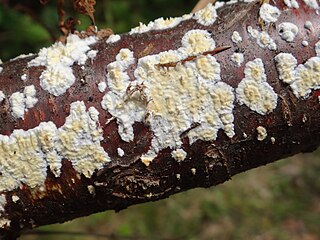
Radulomyces is a genus of crust fungi in the family Radulomycetaceae. The genus has a widespread distribution and contains 11 species. It was circumscribed by Danish botanist Mads Peter Christiansen in 1960, with Radulomyces confluens as the type species. This genus was formally considered to be part of the Pterulaceae family.
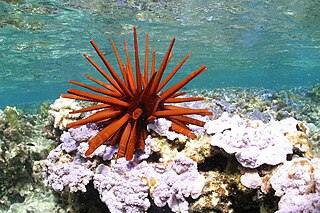
The Echinometridae are a family of sea urchins in the class Echinoidea.
Scopula molaris is a moth of the family Geometridae. It is found in South Africa.
Chomatodus is a prehistoric cartilaginous fish genus.
Cryptophasa molaris is a moth in the family Xyloryctidae. It was described by Thomas Pennington Lucas in 1900. It is found in Australia, where it has been recorded from New South Wales and Queensland.

Ptyctodus is an extinct armour-plated fish of the late Devonian. Ptyctodus belongs to the family Ptyctodontidae and is of the class Placodermi. They share a close resemblance to modern day chimaeras (Holocephali). Fossils of this armour-plated fish have been found in locations such as in Russia, the Michigan Basis, and Arizona, United States.

The Xingu–Tocantins–Araguaia moist forests (NT0180) is an ecoregion in the eastern Amazon basin. It is part of the Amazon biome. The ecoregion is one of the most severely degraded of the Amazon region, suffering from large-scale deforestation and selective extraction of timber, particularly along the Trans-Amazonian Highway and in the higher and more populated southern portions.
Fausto Malari or Fausto Molari or Fausto Mellari was a Roman Catholic prelate who served as Bishop of Chiusi (1602–1608).

Heliria is a genus of treehoppers in the family Membracidae.
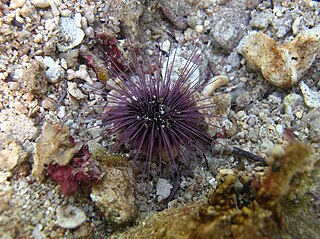
Echinostrephus is a genus of echinoderms belonging to the family Echinometridae.
Giovanni Molari is an Italian engineer and academic, whose research has focused on mechanised agriculture and livestock machinery. He has served as rector of the University of Bologna since 1 November 2021.
Telamona molaris is a species of treehopper in the family Membracidae.











